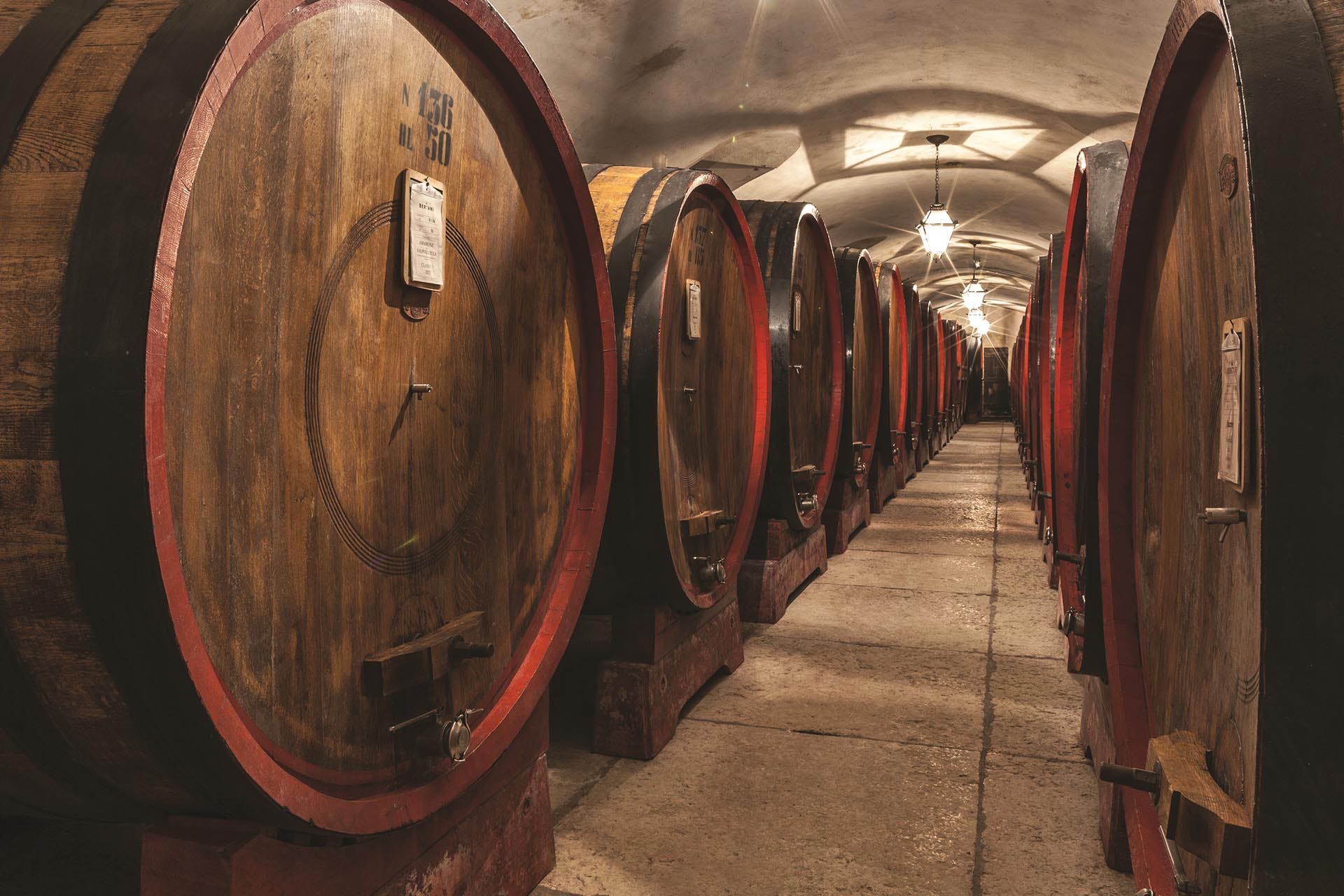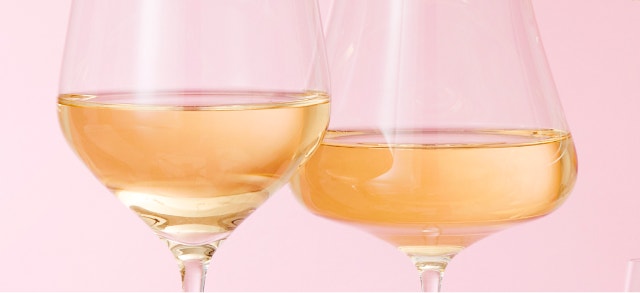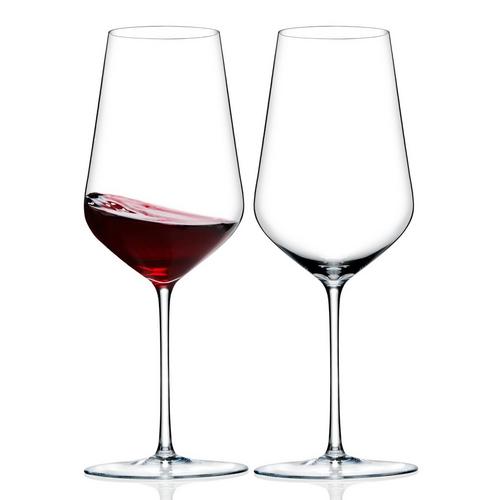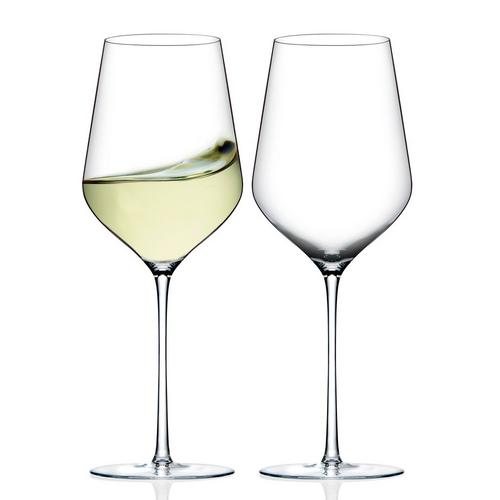Wine Enthusiast |
- Winemakers in this Italian Region Eschew Oak for Cherry Wood
- Five Popular Grapes With Different Names Around the World
- Wine Enthusiast Podcast: The Wide World of Italian Sparkling Wine
| Winemakers in this Italian Region Eschew Oak for Cherry Wood Posted: 23 Jun 2021 04:30 AM PDT  "In the past, wooden barrels had a simple function, and that was to transport wine from one place to another," says Andrea Tella, enologist at Serego Alighieri, a historic Valpolicella winery in Veneto, Italy. "Winemakers would use whatever wood was available to them locally and historically, [and] here in Valpolicella, there has always been a sizable cherry presence." Cherry barrels were common in Valpolicella cellars until the late 20th century, when oak became the choice for winemakers across the globe. Only a handful of Valpolicella wineries still champion cherry casks, like Serego Alighieri, and some smaller wineries. "Cherry isn't as popular now, but we've always kept it as a distinguishing feature for our wines, although we're well aware of its downsides," says Tella. Andrea Lonardi, chief operating officer of Bertani Domains, believes that oak's success came at the expense of other woods like cherry, chestnut, acacia and redwood. Oak can help tame a wine's tannins, adjust its color, provide pleasant flavors of vanilla, coconut or spices, and protect it from premature oxidation. Cherry wood isn't as tightly grained as oak, so it can allow wine to oxidize, which can results in loss of fresh fruit flavor and astringent tannins.
"We’ve experienced a remarkable stylistic shift over the past 10 to 15 years," says Lonardi. "Compared to the past, today we expect a more delicate structure, which is difficult to achieve by using cherry [wood], while oak can definitely help towards that."  Cherry wood is also trickier to make into barrels. Tella says that oak staves are made by splitting the wood, like a lumberjack would do with an axe. The technique keeps the wood's capillaries intact. But cherry wood requires staves be sawn out of the tree's trunk, which "increases the risk of breaking a capillary, and the wine may gush out of the barrel as a result," he says. If used correctly, cherry wood can "liberate the fruit" and lend a wine its distinctive aromas, says Tella. "Our cherry wood-aged Amarone stands out for its characteristic fruitiness, especially Maraschino cherry, as well as cocoa bean and sweet spice flavors and a balsamic note," he says. "Cherry barrels are only very lightly toasted, so there aren't those vanilla, coconut and toast flavors that you find in some more international-tasting Amarones." To avoid premature oxidation and to improve color stability, Tella and Lonardi have their wines spend a majority of time in large oak casks before being transferred to cherry barrels for a few months to acquire the wood's flavors. For Tella, maturation in a 600-liter cherry wood cask, the traditional fusto Veronese, suits all styles of wine. His Recioto and Rosso Verona Indicazione Geografica Tipica (IGT) are aged in cherry wood for three months, while the Amarone and Valpolicella Classico Superiore spend four months in it. Lonardi believes that cherry wood aromatics better complement higher alcohol content and more concentrated styles. "The cherry wood gives a touch of personality, with that oxidative note of wet peach leaf, but it's only suited to 'serious' wines, not much to entry-level ones," he says. Bertani's Recioto spends about 12 months in cherry wood. Secco Vintage, the producer's historical blend of Corvina, Sangiovese, Syrah and Cabernet Sauvignon, spends as much as 18 months in 750-liter cherry and chestnut barrels. Determined to preserve this Valpolicella tradition, Pier Paolo Antolini and his brother, Stefano, mature most of their wines in cherry barrels. "The amount of cherry wood-aged wine in the blend varies from year to year," says Pier Paolo. "It's lower in the Ripasso, higher in the Amarone. It's crucial to use cherry wisely because it can seriously alter the wine, but it's also got the potential to give our Amarone freshness and pleasantness."  Despite being markedly porous, the wood tends to clog with usage, which Pier Paolo believes reduces the risk of premature oxidation. "When we go around sampling our own wines, the one in our oldest 500-liter cherry wood barrel always tastes better than the others," he says. By championing cherry, Antolini, Bertani and Serego Alighieri walk a thin line between added character and an increased risk of spoilage. Their commitment brings a touch of local flavor back to the Valpolicella, and it helps to maintain a nearly abandoned tradition. |
| Five Popular Grapes With Different Names Around the World Posted: 23 Jun 2021 04:10 AM PDT  Wine is a global business, and grapes have traveled internationally for thousands of years. As different varieties are adopted in new regions, they’re often been given new names— consider how France’s Syrah became Shiraz, or Primitivo became known as Zinfandel. Here are five popular grapes that have different names depending on where they are grown. Syrah/ShirazSyrah is a French variety that's perhaps most famous for being the principle grape of the Northern Rhône. But when it was exported to Australia, this red grape became known as Shiraz. No one knows for certain why the name was changed. But it helped brand Australian offerings as a noteworthy and unique style. In fact, regions like California have adopted the name Shiraz to sometimes indicate their bottles are like the the fruitier Australian style rather than the rustic French Syrahs. Domaine des Remizières 2019 Crozes-Hermitage; $23, 91 points. Whispers of eucalyptus and charred clove lend spice to black currant and cherry flavors in this 100% Syrah sourced from vines averaging 45 years in age. Matured 15 months in a combination of new and used oak, it’s full bodied and deeply concentrated but maintains freshness and vitality. Delicious now the wine should hold well through 2029. French Libation. —Anna Lee C. Iijima One Leaf 2018 Shiraz (California); $10, 90 points. This robust and mouthcoating wine offers generous black fruits, hints of white and black pepper and a firm but rich texture. It flirts with a gamy, earthy character for added complexity that’s rare in a wine this affordable. Best Buy. —Jim Gordon Powell & Son 2017 Shiraz (Barossa Valley); $31, 90 points. This is a rich, old school Barossa Shiraz. Plump fruit in the form of currents and blueberries are backed by notes of olive brine, earthy spice, charred veg and a furniture polish-and-vanilla-oak character. The palate is dense but not overtly syrupy or muscular. There’s quite a bit of high gloss oak showing here but plenty of fruit and spice, too. This is well-groomed but wouldn’t it be nice if a few freckles showed through all the makeup? Powell & Son. —Christina Pickard Primitivo/ZinfandelPuglia's hot growing seasons are perfect for producing powerful and well-structured Primitivo. But in California, this grape is known as Zinfandel, where it produces soft and voluptuous wines. Though these may be the most popular regions for this grape, it originated in Croatia where it's called Tribidrag. Tribidrag, or Primitivo, was first mentioned in Italy in 1799. And the grape may have arrived in the U.S. as early as the 1820s. Like with the Syrah/Shiraz divide these two names can also be used as an indication of style in international markets. V. Sattui 2018 Pilgrim Vineyard Old Vine Zinfandel (Lodi); $39, 93 points. Deep and brooding, this quietly powerful wine is drenched in black-fruit flavors and accented by hints of clove, vanilla and cinnamon for a great sense of complexity along with rich and satisfying fruitiness. Full bodied yet rather soft in tannins, it has a supple mouthfeel. Editors' Choice. —J.G. Allan Hancock 2019 Zinfandel (Paso Robles); $15, 92 points. Light in the glass, this is a fresh and zesty style of Zinfandel, showing strawberry, fennel and light garden herbs on the nose. The lovely palate is also fresh with tart red-plum and raspberry flavors, filled in by baking spices and dried herbs. The higher alcohol is not apparent at all. Best Buy. —Matt Kettmann Botromagno 2018 Primitivo (Puglia); $19, 90 points. A mix of tilled earth, violet, blackberry, plum and dried hibiscus carry this enticing Primitivo. The medium-bodied palate is driven by juicy dark fruit, with savory tones of earth, flowers and spice adding depth. The tannins show some grit, but it’s nothing a hearty protein can’t temper. LLS–Winebow. Editors' Choice. —Alexander Peartree Pinot Noir/SpätburgunderPinot Noir is the most common name for this grape that hails from France. The origins of this grape are uncertain but its mentioned as far back as 1283 under yet another name, Moreillon. Pinot Noir is responsible for the iconic wines of Burgundy and has spread under the same name to produce world class wines in regions like California and Oregon. And it's the signature red grape of New Zealand. In German, the grape is called Spätburgunder, which translates to late Burgundian referring to the variety's origins and growing season. Germany is one of the worlds top producers of the grape and the wines have excelled in quality. Wittmann 2018 Rotwein Trocken Spätburgunder (Rheinhessen); $30, 93 points. The nose is quiet here suggesting trace hints of toast and smoky mineral, but the palate of this spry, fresh-footed Pinot Noir offers bold strokes of zippy black cherry and raspberry. Freshly concentrated and edged by fine-grained, silky tannins, it’s a wine that’s ready now but should drink beautifully through at least 2028. Loosen Bros. USA. —A.I. Élevée Winegrowers 2018 Björnson Vineyard Pinot Noir (Eola-Amity Hills); $52, 92 points. Ripe strawberry fruit touches on jam, along with lighter flavors of Bing cherry. It’s an open, delicately herbal wine, with a peppery pop to the finish. One-third of the barrels were new. —Paul Gregutt Domaine Dominique Guyon 2017 Les Dames de Vergy (Bourgogne Hautes Côtes de Nuits); $35, 91 points. Packed with swathes of red fruits, this generous, fruity wine is approaching maturity. Succulent acidity goes well with the light structure and refreshing fruitiness. Drink now. Taub Family Selections. —Roger Voss Mourvèdre/Monastrell/MataroThis Spanish variety has many names within the country itself but the most common is Monastrell. The grape is said to have traveled to France's Provence region in the 16th century from Morvedre, now Sagunto, giving the name Mourvèdre. Similarly the variety traveled to France's Roussillon region from Mataró. Mataró is now the most common name used in Australia and California. Skinner 2018 Mourvèdre (El Dorado); $30, 92 points. Opulent plum, blueberry and black-cherry flavors give this full-bodied and moderately tannic wine lots to like, while moderate tannins add balance and grip. It’s an outstanding example of an under appreciated varietal. Editors' Choice. —J.G. Bodegas Luzón 2017 Luzón Colección Monastrell (Jumilla); $11, 90 points. Plum and berry tones are pure and fruity on the nose. The mix of dark fruit and spice notes makes for a solid flavor profile, while this Monastrell offers hints of burnt toast, black licorice and spice on a slightly warming finish. Aviva Vino. Best Buy. —Michael Schachner John Duval Wines 2017 Annexus Mataro (Barossa Valley); $60, 90 points. This small batch Mourvèdre from renowned Barossa winemaker John Duval is more austere than the previous vintage. It requires plenty of swirling in glass before unveiling its true characters, namely cherry, red currant, licorice, spice and stony earthy undertones. Duval’s winemaking signature is all over the palate. A powerful grip of textured tannins support red fruit, spice and earth. Drink this now with protein and until 2029. Old Bridge Cellars —C.P. Pinot Gris/Pinot GrigioPinot Gris is mutation of Pinot Noir, which resulted in berries that are darker skinned than most white grapes and can turn pink or even purple as they ripen. The name has been attributed to several varieties going back to the Middle Ages. But modern Pinot Gris was introduced to Italy in the early 19th century and adopted the Italian translation of Pinot Grigio. The grape has since exploded across the globe producing wines that range from simple to complex. And Pinot Grigio has even become a favorite among skin-contact white wine producers around the world. Bedell 2019 Pinot Gris (North Fork of Long Island); $25, 90 points. From young vines planted in 2016, this wine is a triumph. Bright, zesty aromas of yellow apple, Meyer lemon and honeysuckle are concentrated and lifted on the nose. There’s a gentle roundness to the light-bodied palate, with juicy, plush apple and lemon flavors that don’t falter from start to finish. A bit of pithy waxiness lends some grip to an otherwise delightfully fruity wine. —A.P. Kettmeir 2019 Pinot Grigio (Alto Adige); $20, 90 points. Tangy and delicious, this vibrant white opens with delicate scents of spring blossoms and white stone fruit. On the crisp palate, fresh acidity accompanies green apple, white peach and fennel. Santa Margherita USA. Editors' Choice. —Kerin O'Keefe Bieler Family 2019 Daisy Pinot Grigio (Columbia Valley): $12, 88 points. The aromas are light but bring some complexity, with notes of apple, pear and the underside of pineapple. Mouthwatering citrus and pear flavors follow. Dried flower notes linger on the finish. Best Buy. —Sean P. Sullivan |
| Wine Enthusiast Podcast: The Wide World of Italian Sparkling Wine Posted: 23 Jun 2021 03:30 AM PDT  Winemakers across Italy produce a wide range of sparkling wines. From assorted appellations and using different grape varieties and techniques, a beautiful array of offerings can be found from the country. But with so much variety, it can be a little tricky to know exactly what kind of final wine you should expect in any given glass. To help break it down, Tasting Director Alexander Peartree talks with Giuseppe LoCascio, Chief Everything Officer of Vntners, an online direct-to-consumer retail shop, and Lucidity Wine Merchants, an import/wholesale wine company, about four of the country's prominent sparkling wines: Prosecco, Franciacorta, Trentodoc and Lambrusco. They discuss what sets each of these types of wines apart, and why they are great for any occasion. From the charmat method to metodo classicos, frizzante to spumante, bright and fruity pours to more mature profiles, there's an Italian sparkling wine for every palate and personal taste. Visit our Buying Guide for recommendations of recently reviewed Italian sparklers. If you like your sparklers dry, check out this guide to the best of the bone-dry Italian bubblies.   |
| You are subscribed to email updates from Wine Enthusiast. To stop receiving these emails, you may unsubscribe now. | Email delivery powered by Google |
| Google, 1600 Amphitheatre Parkway, Mountain View, CA 94043, United States | |



















0 comments:
Post a Comment